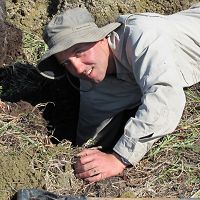Jepsen et al., 2019
Water residence time (age) and flow path exert synchronous effects on annual characteristics of dissolved organic carbon in terrestrial runoff
JEPSEN, S.M., T.C. HARMON, S. SADRO, B. REID, S. CHANDRA (2019)
Science of the Total Environment
-
Sierra, COLLABORATOR
-
Sierra, COLLABORATOR
Abstract
Catchment hydro-physical controls on the interannual variability of dissolved organic carbon (DOC) in terrestrial watershed runoff, important for water quality, ecosystem structure, and foodweb dynamics, are not well understood. To address this, we simulated water residence time ("age") and flow path of terrestrial runoff and analyzed their mediating effect on relationships between annual runoff volume, DOC concentration, and DOC age. We applied this analysis to a snow-influenced watershed in California's Sierra Nevada (USA) across a range of soil types, elevations (90-4210 m), and years (1950-1999). Simulated increases in annual runoff volume were accompanied by younger ages (r2 = 0.53-0.63) of DOC in quickflow, comprised of surface runoff and lateral flow through soil. Increases in annual runoff volume were also accompanied by gentler relationships between intra-annual (weekly) values of DOC concentration and runoff volume, regression-slopes of which followed a power-law relationship to annual runoff (r2 = 0.12-0.92) for approximately 70% of the watershed. Simulations including dynamics of water age and soil temperature produced annual ages of quickflow DOC ranging from 1 to 70 days over all soil types and water years. Similarity of this range to an observed, 1-69 day range in half-lives of relatively labile DOC in previous studies suggests substantial interannual and spatial variability in the biodegradability of DOC in terrestrial runoff. Simulations excluding dynamics of water age and soil temperature predicted order-of-magnitude less interannual variability in age of quickflow DOC, demonstrating the important effect of interannual variability in soil-water interaction times. These findings suggest that the distribution of DOC bioprocessing along transitions between terrestrial and aquatic systems may be strongly influenced by year-to-year variability in age of water.
Citation
JEPSEN, S.M., T.C. HARMON, S. SADRO, B. REID, S. CHANDRA (2019): Water residence time (age) and flow path exert synchronous effects on annual characteristics of dissolved organic carbon in terrestrial runoff. Science of the Total Environment. DOI: 10.1016/j.scitotenv.2018.11.392
Explore Further


